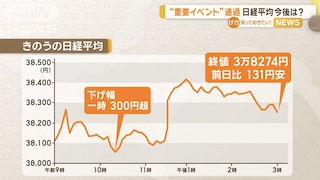Apr 18 (News On Japan) - In the past few years, modern HR operations have witnessed significant transformation and disruptions in their traditional practices.
Yet the core functionality of human capital management or HCM is the same; recruitment, onboarding, training, payroll, etc. As the demand for the HR department is becoming the center of business innovation, Workday Human Capital Management softwares can provide data-driven insights and analytics, taking charge of numerous functions and processes, for effective workforce management, saving time and money.
What is Workday Human Capital Management?
Workday Human Capital Management is a cloud-based software capable of handling a range of business aspects. It provides a one-stop solution for various human resource functionalities, empowering and accelerating the organizational collaboration and aligning business objectives with strategic approach.
It provides a customized framework, allowing businesses to manage their workforce, ensuring both HR and financial departments receive the required information and resources.
Here are various modules of HCM:
1. Recruitment, Hiring, and Onboarding:
- Attracts qualified candidates for open positions.
- Streamlines the hiring process for a smooth experience.
- Integrates new hires into the company culture and equips them for success.
2. Payroll:
- Accurately calculates and distributes employee compensation.
- Manages tax withholdings and deductions.
- Ensures timely and compliant payment processing.
3. Time and Attendance:
- Tracks employee work hours and schedules.
- Enables accurate calculation of payroll and benefits.
- Provides insights into employee productivity and utilization.
4. Benefits:
- Manages various programs, health insurance, and other benefits like retirement.
- Oversees eligibility and enrollment for a number of benefit programs.
- Offers materials and assistance to help employees understand their benefits options.
5. Talent Management:
- Identifies and develops high-potential employees.
- Manages performance evaluations and career development plans.
- Retains top talent and fosters a culture of continuous learning.
6. Training and Professional Development:
- Provides employees with the skills and knowledge needed for their roles.
- Offers opportunities for professional growth and advancement.
- Upskills the workforce to meet evolving business needs.
7. Analytics and Reporting:
- Collects and analyzes HCM information to uncover insights.
- Produces summaries reports on key metrics such as, staff attrition, efficiency and involvement.
- Aids in human resources strategies with data-driven decision-making.
8. Compliance:
- Ensuring compliance with labor laws and regulations
- Overseeing processes and data management to meet compliance requirements
- Minimizing risks linked to non compliance.
Practices That Are Included in Human Capital Management
Human Capital Management covers several administrative and strategic practices. These processes are as follows:
- Workforce planning
- Compensation planning
- Recruiting and hiring
- Onboarding
- Training
- Time and attendance
- Payroll
- Performance management
- Workflow management
- HR data and reporting
- Compliance
- Employee service and self-service
- Benefits administration
- Retirement services
Here are some of the best HCM practices:
Alignment:
- HCM can be aligned with the business objectives, boosting the success rate of the organization.
- HR processes and other business strategies can be synced with the company's mission and vision.
Automation:
- Leveraging HR integrated software can streamline various repetitive tasks, enhancing the overall processes.
- HCM automation can be used to effectively boost various processes such as recruitment, onboarding, performance management, and other operations.
Communication:
- Foster open and transparent communication between employees and management.
- Utilize various communication channels to keep employees informed about company updates, policies, and changes.
Personalization:
- Adapt HR initiatives and programs to each employee's unique requirements and preferences.
- Provide chances for individualized learning and growth to raise employee happiness and engagement.
How to Choose the Right HCM Software?
There are many HCM system options available in the market. Their capabilities and functions vary, so it's crucial to carefully assess your organizational needs before making your selection.
Some organizations use HCM software, installed in their hard drive or server. Cloud-based HCM softwares like Workday Human Capital Management, consists of core HR database, configuration tooling, process automation and more.
Here are some of the key factors that you should consider:
- Scalability: Your HCM software's capacity to expand and change with your company's demands over time makes it an important consideration.
- Capabilities for Integration: Choose software that will work flawlessly with the systems you already have in place to prevent data silos and optimize workflows.
- User-Friendly Interface: Select HCM software with an interface that is easy to use and promotes adoption throughout the company.
- Reporting and Analytics: Choose software with robust analytics features and reliable reporting so you can monitor important indicators and make data-driven choices.
- Security and Compliance: Select software with strong security features and compliance with industry standards to safeguard confidential employee information.
To protect your organization, consider these factors when evaluating HCM software options, as it will also help you keep pace with the ever-changing technology, regulatory and statutory requirements at jurisdiction levels.
Conclusion
In conclusion, to realize the return on investment (ROI) from their Workday Human Capital Management (HCM), firms must embrace the rapidly changing technology. Adapting to new and advancing technologies, you can refine your organizational testing approach. With the help of test automation tools such as Opkey, you can facilitate quicker HCM implementation.









